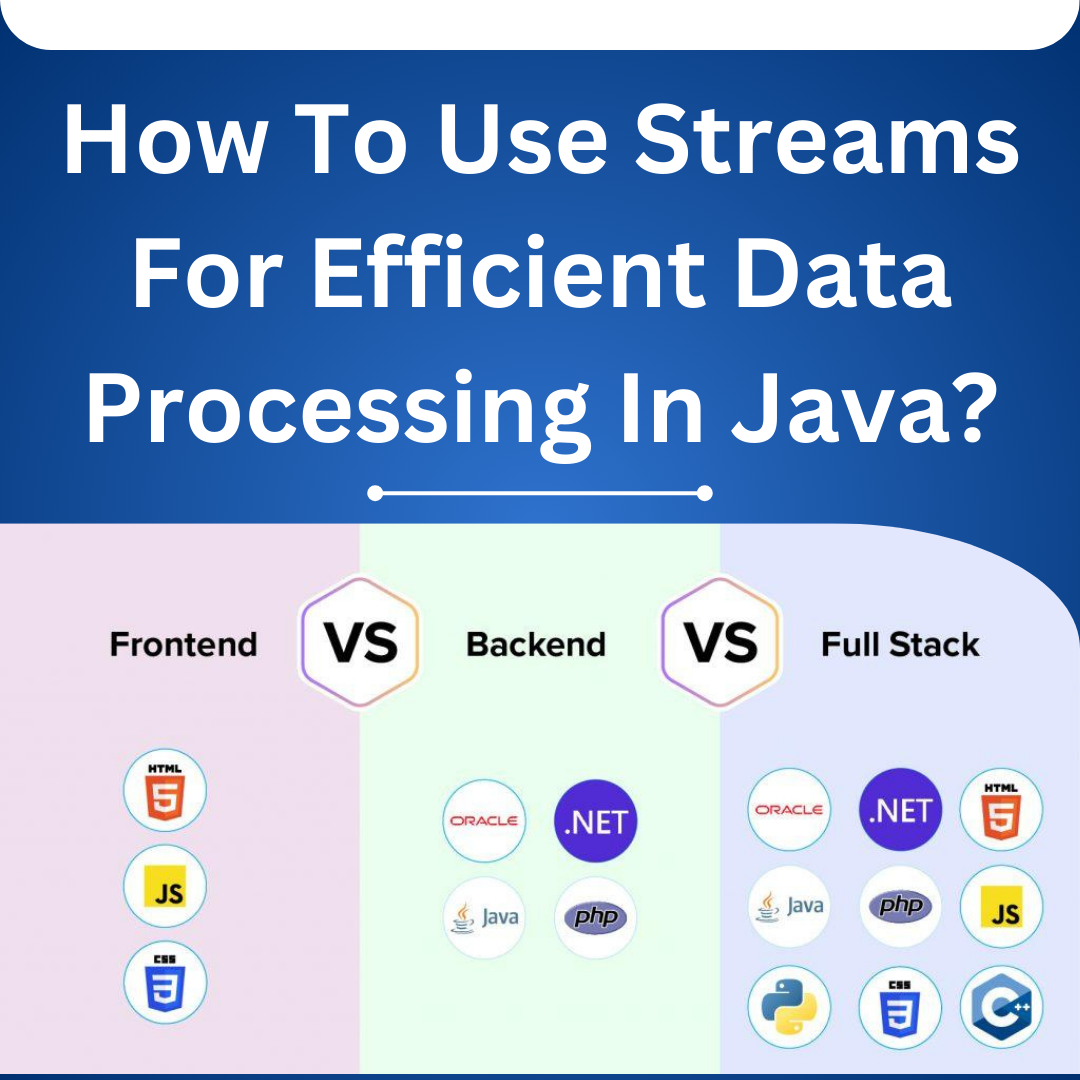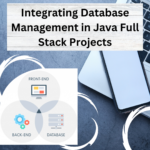
Java Full Stack Development: Bridging the Gap Between Frontend and Backend
Java Full Stack Development stands out as a versatile and in-demand skill set. With its ability to seamlessly integrate frontend and backend components, Java Full Stack Development serves as a bridge between these two crucial aspects of web development. For students embarking on this journey, understanding how Java ties these elements together is essential for success.

What is Java Full Stack Development?
Java Full Stack Development encompasses the entire spectrum of web application development, from the presentation layer to the data access layer, all within the Java ecosystem. This approach offers several advantages, including code reusability, a unified programming language across the stack, and a consistent development environment.
On the frontend, Java developers have access to a wide range of frameworks and tools for building modern UIs, including JavaServer Faces (JSF), Spring MVC, Vaadin, and Apache Wicket. These frameworks provide robust support for creating responsive, interactive, and visually appealing user interfaces, often with features such as component-based architecture, data binding, and client-side validation.
Meanwhile, on the backend, Java offers a wealth of libraries and frameworks for implementing server-side logic, managing databases, and handling business operations. Popular choices include Spring Boot, Jakarta EE (formerly Java EE), Micronaut, and Play Framework, each offering unique features and capabilities for building scalable and reliable backend services.
By utilising Java Full Stack Development, developers can harness the power of Java’s rich ecosystem to create end-to-end solutions that meet the demands of modern web applications. Whether it’s developing a dynamic frontend interface or implementing robust backend services, Java Full Stack Development provides the tools and frameworks necessary to build high-quality, feature-rich web applications that delight users and drive business success. For those interested in mastering these skills, a Java Full Stack Developer course offers comprehensive training and practical experience to become proficient in both frontend and backend development within the Java ecosystem.
The Frontend: Creating Dynamic User Interfaces with Java
At the frontend, Java developers utilize frameworks such as JavaServer Faces (JSF), Spring MVC, or Vaadin to build dynamic and interactive UI components. These frameworks provide a robust set of tools for creating responsive web pages, handling user input, and managing client-side interactions.
For example, JavaServer Faces simplifies UI development by allowing developers to create reusable UI components and manage application state using server-side managed beans. With its component-based architecture, JSF enables developers to build complex UIs with minimal code, streamlining the development process.
Similarly, Spring MVC offers a lightweight and flexible framework for building web applications, leveraging the Model-View-Controller (MVC) design pattern to separate concerns and maintain code clarity. Developers can use Spring MVC to handle HTTP requests, bind data to UI components, and implement custom business logic, all within a Java-centric environment.
The Backend: Implementing Server-Side Logic with Java
On the backend, Java developers employ frameworks such as Spring Boot, Jakarta EE (formerly Java EE), or Micronaut to implement server-side logic, manage databases, and handle business operations. These frameworks provide a robust foundation for building scalable and reliable backend services, leveraging Java’s strength in enterprise development.
Spring Boot, for instance, simplifies backend development by offering auto-configuration and convention-over-configuration principles, allowing developers to quickly bootstrap applications without cumbersome setup. With built-in support for dependency injection, data access, and RESTful services, Spring Boot enables developers to focus on business logic rather than infrastructure concerns.
Jakarta EE, on the other hand, provides a comprehensive set of APIs and specifications for building enterprise-grade applications, including support for servlets, JPA (Java Persistence API), and JAX-RS (Java API for RESTful Web Services). Developers can leverage Jakarta EE’s modular architecture to create scalable and portable backend services, ensuring compatibility across different application servers and environments.
Bridging the Gap: Integrating Frontend and Backend with Java
What sets Java Full Stack Development apart is its seamless integration of frontend and backend components, facilitated by Java’s robust ecosystem of libraries, frameworks, and tools. By using Java across the entire stack, developers can leverage a unified programming language and runtime environment, streamlining development, testing, and deployment processes.
For example, developers can use RESTful APIs to establish communication between frontend and backend components, allowing them to exchange data and trigger actions seamlessly. With Java’s support for JSON (JavaScript Object Notation) serialization and deserialization, developers can transmit structured data between client and server, enabling rich and responsive user experiences.
Moreover, Java’s ecosystem offers a wide range of libraries and tools for managing dependencies, testing code, and monitoring application performance. Developers can use build automation tools like Maven or Gradle to manage project dependencies and automate repetitive tasks, ensuring consistency and reliability across the development lifecycle.
Conclusion
In conclusion, Java Full Stack Development serves as a bridge between frontend and backend development, offering a unified approach to building web applications. By leveraging Java’s strengths in both frontend and backend environments, developers can create dynamic, scalable, and reliable web applications that meet the demands of modern users.
For students aspiring or want to become a Java Full Stack Developer, understanding the synergy between frontend and backend components is essential. By mastering Java frameworks and libraries for both frontend and backend development, students can unlock a world of opportunities in the rapidly growing field of web development. With dedication, practice, and a passion for learning, students can embark on a rewarding journey towards becoming proficient Java Full Stack Developers.
About Java full stack pay after placement course at Alpha Tech Academy:
Alpha Tech Academy offers an in-demand Java Full Stack course with a unique pay after placement course model. Students can enroll small deposit and commit to covering tuition fees only after securing a job. This approach eliminates financial barriers to education and aligns the interests of students and the academy.
The course covers both frontend and backend development using Java technologies, equipping students with the skills needed for lucrative careers in the tech industry. With additional career support services, such as resume building and job placement assistance, Alpha Tech Academy ensures students are well-prepared for success in the workforce.


